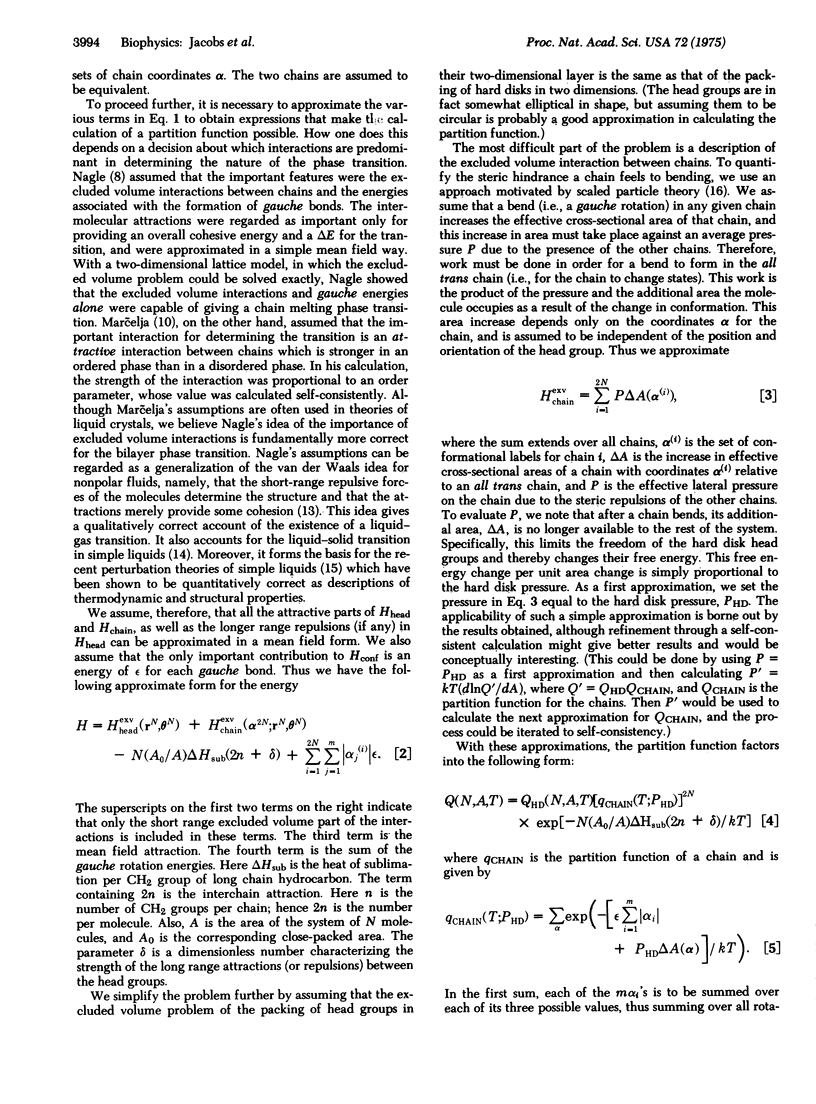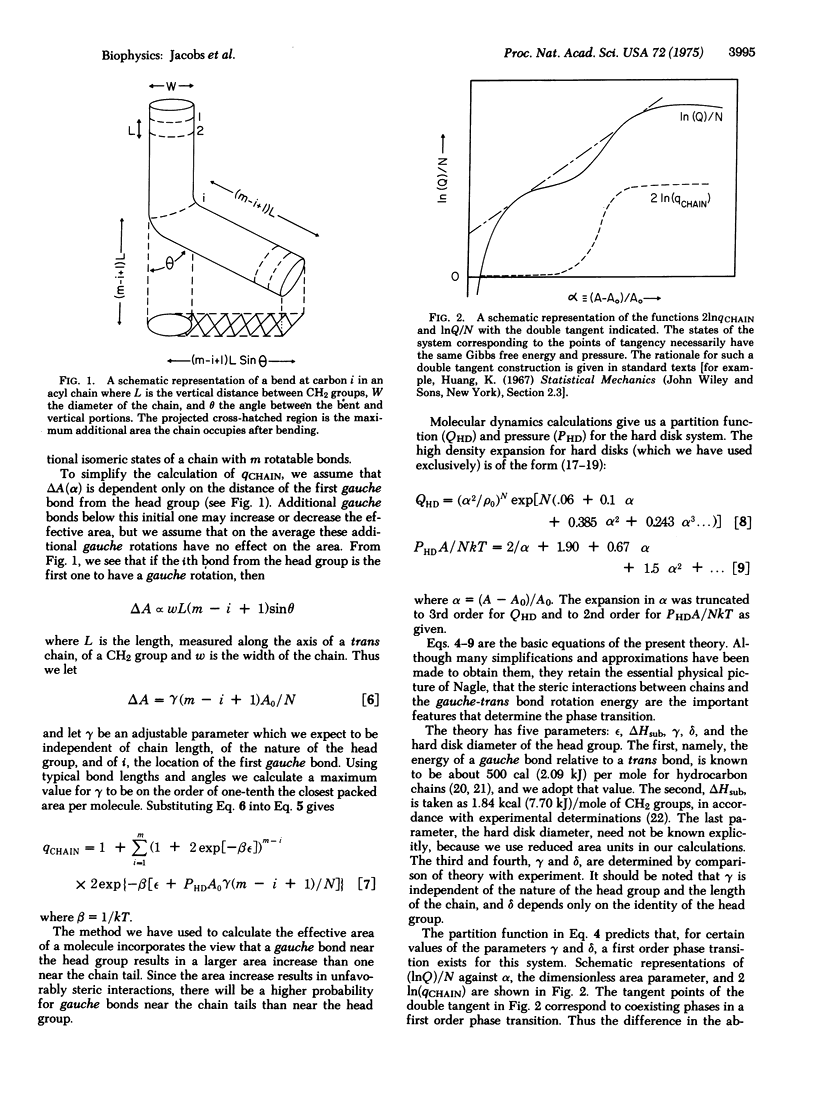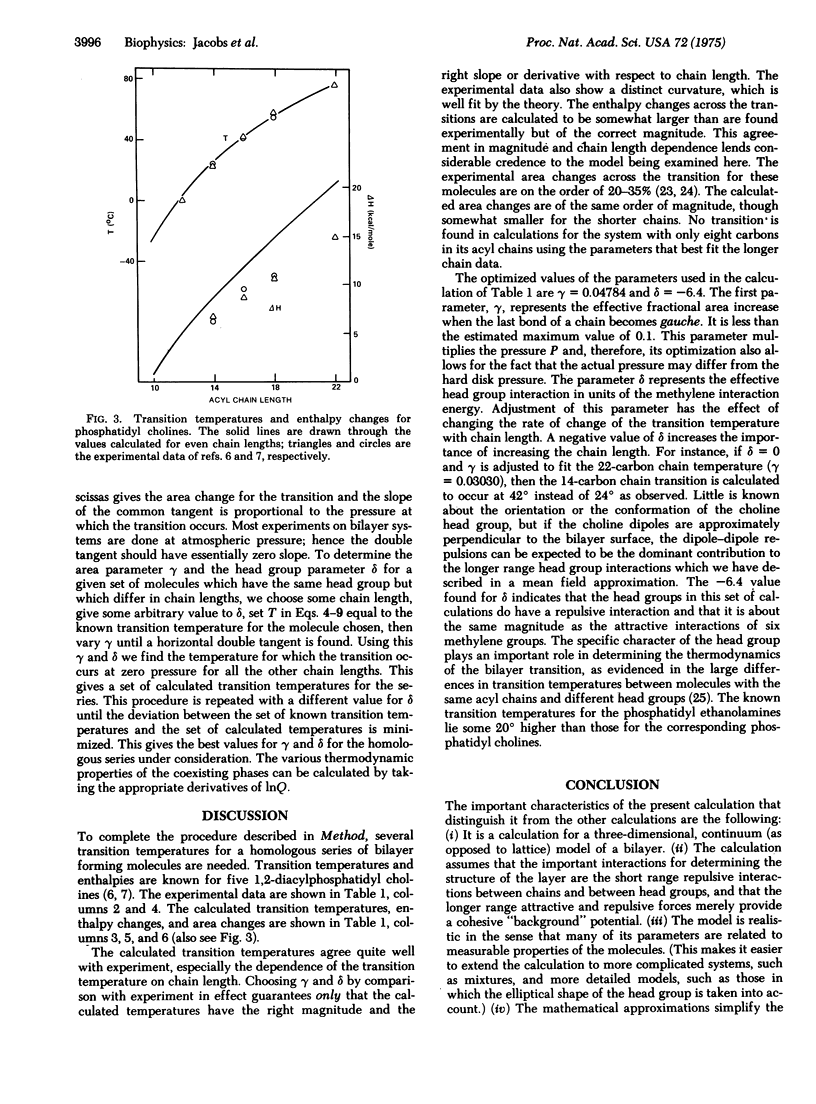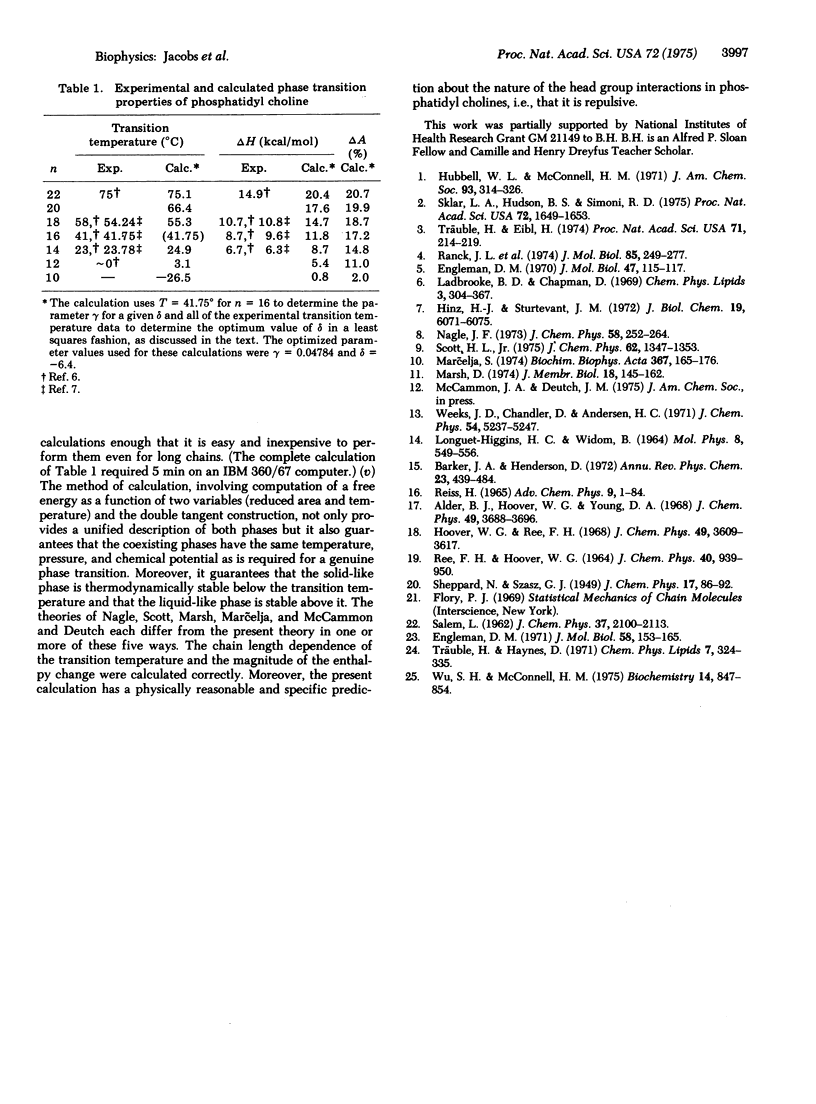Abstract
A model for the chain melting phase transition in dilute aqueous phospholipid bilayer dispersions is presented. This model includes interactions between head groups, between hydrocarbon chains, and within the chains. The head groups are modeled as hard disks which are constrained to lie on a two-dimensional surface separating the aqueous and hydrocarbon regions. The chain statistics problem is treated in an approximate manner using an approach motivated by scaled particle theory to describe the inter-chain steric repulsions in a mathematically tractable way. In this approach the whole system interacts with any given chain through an average lateral pressure which is proportional to the hard disk pressure. Following Nagle, we assume that the steric repulsions between chains and between head groups and the trans-gauche rotation energies are the dominant interactions in determining the transition and we describe the effect of the other interactions with a mean field approximation. Using the known transition temperature of a series of 1,2-diacyl phosphatidyl cholines to adjust two parameters in the theory, the model gives enthalpy and area changes that are in quite reasonable agreement with experiment. Moreover, the curvature observed in the plot of the transition temperature against acyl chain length is reproduced.
Full text
PDF




Selected References
These references are in PubMed. This may not be the complete list of references from this article.
- Engelman D. M. Lipid bilayer structure in the membrane of Mycoplasma laidlawii. J Mol Biol. 1971 May 28;58(1):153–165. doi: 10.1016/0022-2836(71)90238-5. [DOI] [PubMed] [Google Scholar]
- Engelman D. M. X-ray diffraction studies of phase transitions in the membrane of Mycoplasma laidlawii. J Mol Biol. 1970 Jan 14;47(1):115–117. doi: 10.1016/0022-2836(70)90407-9. [DOI] [PubMed] [Google Scholar]
- Hinz H. J., Sturtevant J. M. Calorimetric studies of dilute aqueous suspensions of bilayers formed from synthetic L- -lecithins. J Biol Chem. 1972 Oct 10;247(19):6071–6075. [PubMed] [Google Scholar]
- Hong-wei S., McConnell H. Phase separations in phospholipd membranes. Biochemistry. 1975 Feb 25;14(4):847–854. doi: 10.1021/bi00675a032. [DOI] [PubMed] [Google Scholar]
- Hubbell W. L., McConnell H. M. Molecular motion in spin-labeled phospholipids and membranes. J Am Chem Soc. 1971 Jan 27;93(2):314–326. doi: 10.1021/ja00731a005. [DOI] [PubMed] [Google Scholar]
- Ladbrooke B. D., Chapman D. Thermal analysis of lipids, proteins and biological membranes. A review and summary of some recent studies. Chem Phys Lipids. 1969 Dec;3(4):304–356. doi: 10.1016/0009-3084(69)90040-1. [DOI] [PubMed] [Google Scholar]
- Marcelja S. Chain ordering in liquid crystals. II. Structure of bilayer membranes. Biochim Biophys Acta. 1974 Oct 29;367(2):165–176. doi: 10.1016/0005-2736(74)90040-6. [DOI] [PubMed] [Google Scholar]
- REAGAN J. W., SCOTT R. B. The detection of cancer of the uterine cervix by cytological study. Am J Obstet Gynecol. 1951 Dec;62(6):1347–1352. doi: 10.1016/0002-9378(51)90064-6. [DOI] [PubMed] [Google Scholar]
- Ranck J. L., Mateu L., Sadler D. M., Tardieu A., Gulik-Krzywicki T., Luzzati V. Order-disorder conformational transitions of the hydrocarbon chains of lipids. J Mol Biol. 1974 May 15;85(2):249–277. doi: 10.1016/0022-2836(74)90363-5. [DOI] [PubMed] [Google Scholar]
- Sklar L. A., Hudson B. S., Simoni R. D. Conjugated polyene fatty acids as membrane probes: preliminary characterization. Proc Natl Acad Sci U S A. 1975 May;72(5):1649–1653. doi: 10.1073/pnas.72.5.1649. [DOI] [PMC free article] [PubMed] [Google Scholar]
- Träuble H., Eibl H. Electrostatic effects on lipid phase transitions: membrane structure and ionic environment. Proc Natl Acad Sci U S A. 1974 Jan;71(1):214–219. doi: 10.1073/pnas.71.1.214. [DOI] [PMC free article] [PubMed] [Google Scholar]


